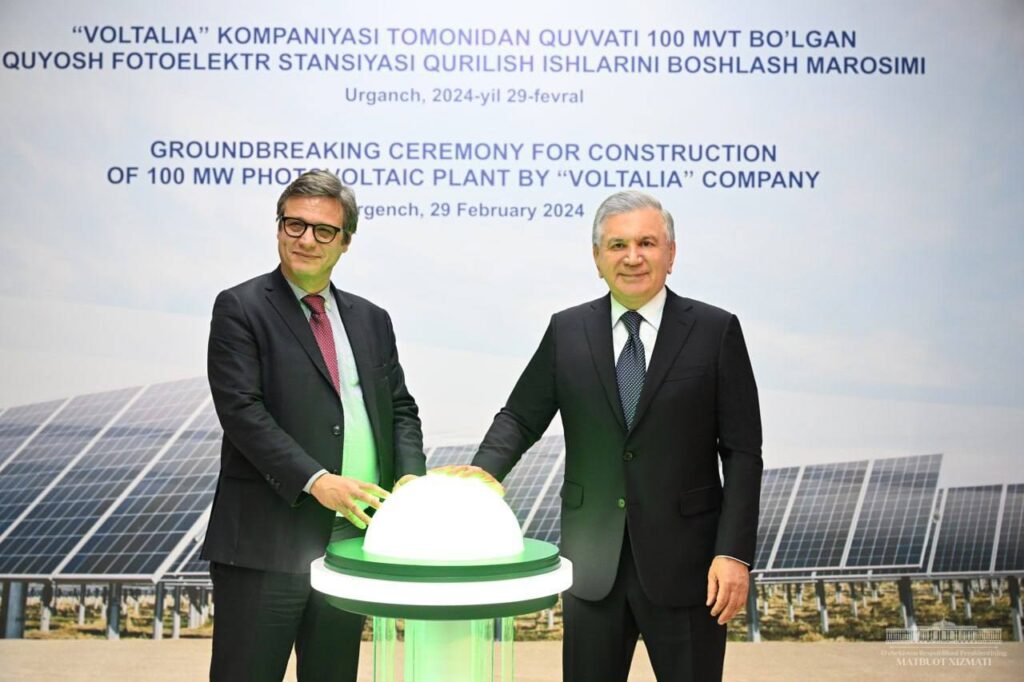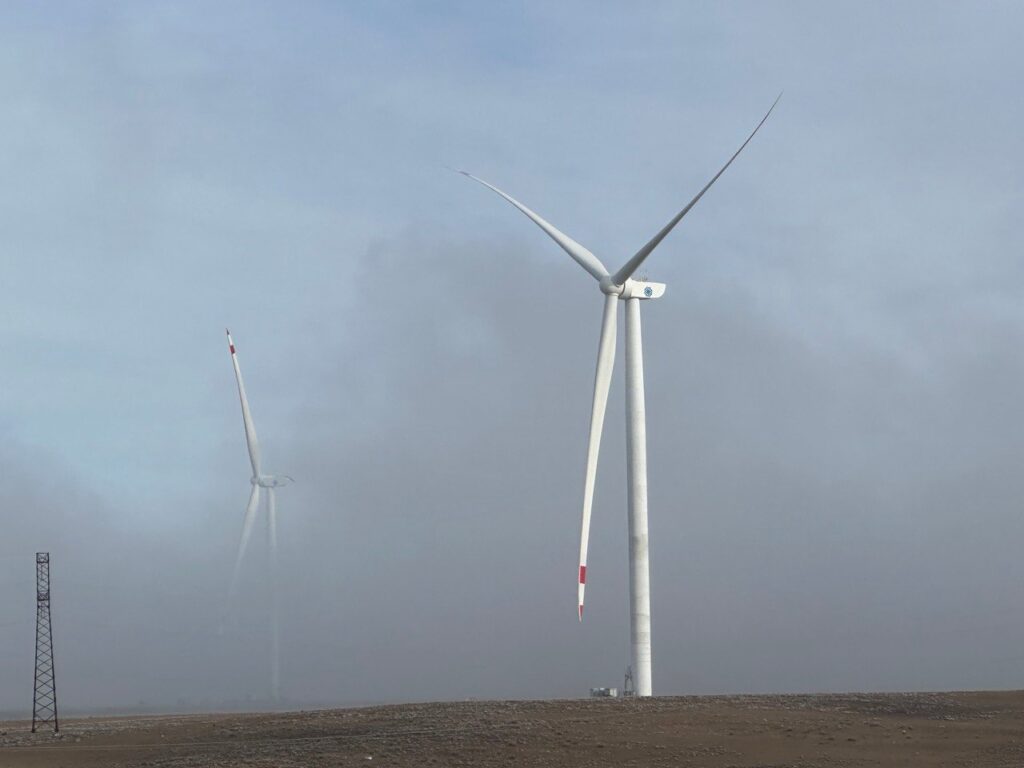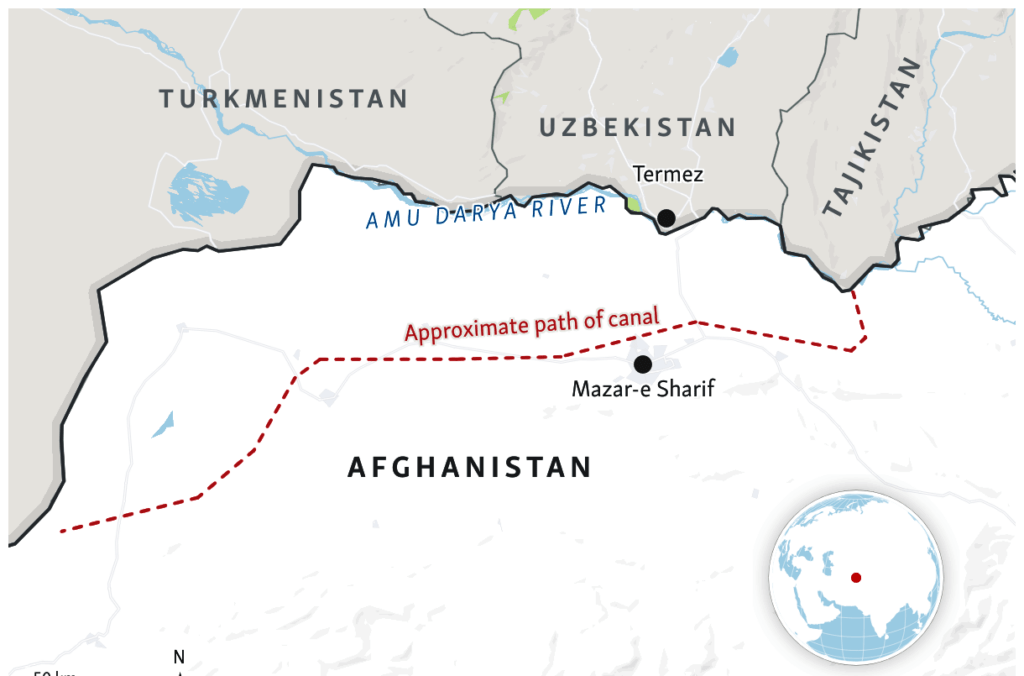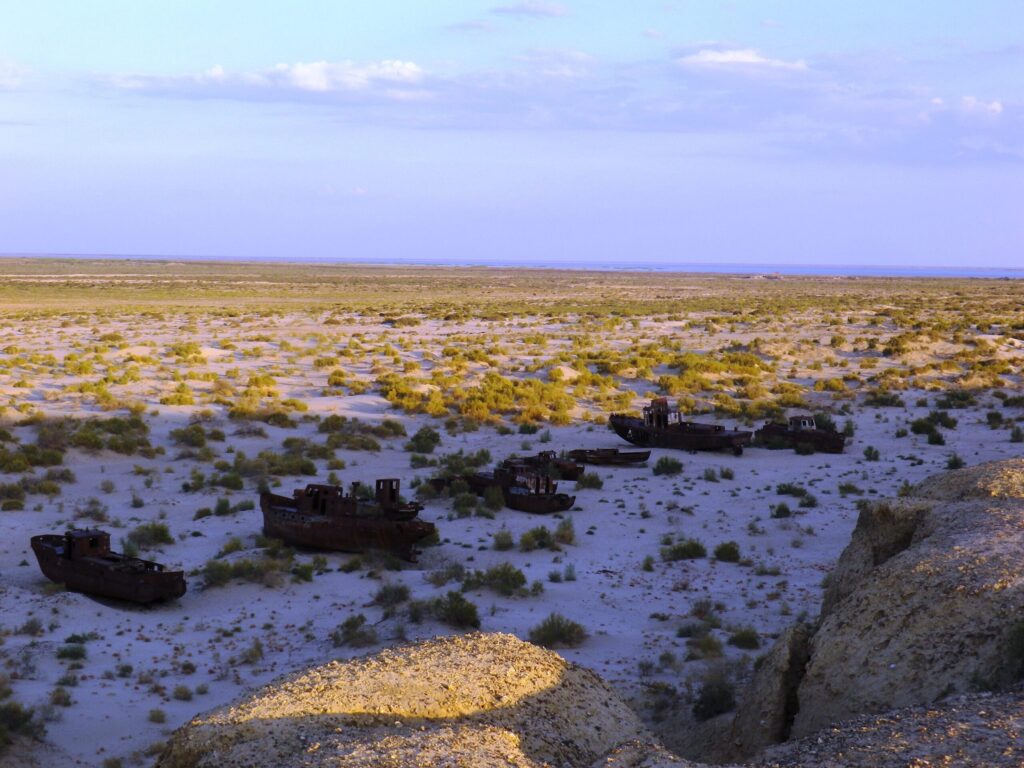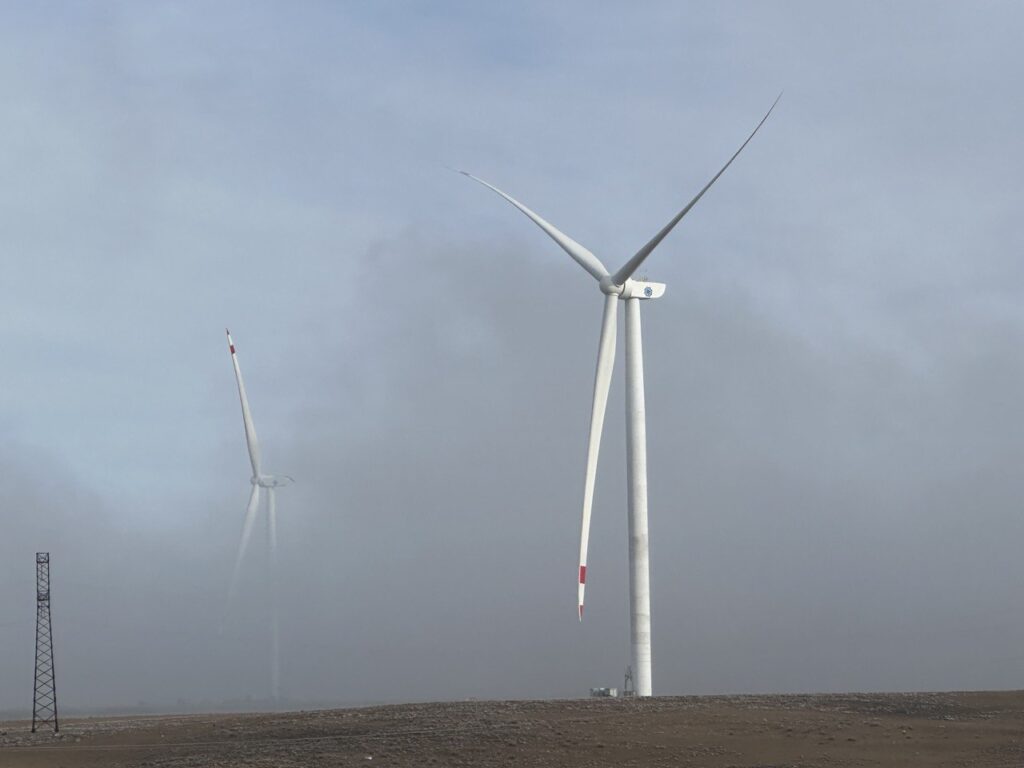French Company to Build a Solar Plant in Uzbekistan
Attended by Uzbek President Shavkat Mirziyoyev, a ground-breaking ceremony for the construction of a solar power plant with a capacity of 100 megawatts took place in Uzbekistan’s Khorezm region on February 29th. Built by the French company Voltalia, the new photovoltaic plant will generate 254 million kilowatt-hours of green energy per annum and increase the volume of electricity generated in Khorezm by 30%. In addition to providing 11% of the region's annual electricity consumption by the end of the year, the new plant will save 76 million cubic meters of natural gas and prevent the release of 106 thousand tons of harmful substances into the atmosphere. The project will also harness agrovoltaics technology and by combining energy production and agriculture, allow crops to be grown under solar panels for the first time in Uzbekistan. In discussion with Sébastien Clerc, CEO of Voltalia, President Mirziyoyev emphasized his support of both the Khorezm project and the construction of a hybrid power plant in the Bukhara region, and reiterated the extent to which such innovative projects strengthen multifaceted cooperation between Uzbekistan and France.
